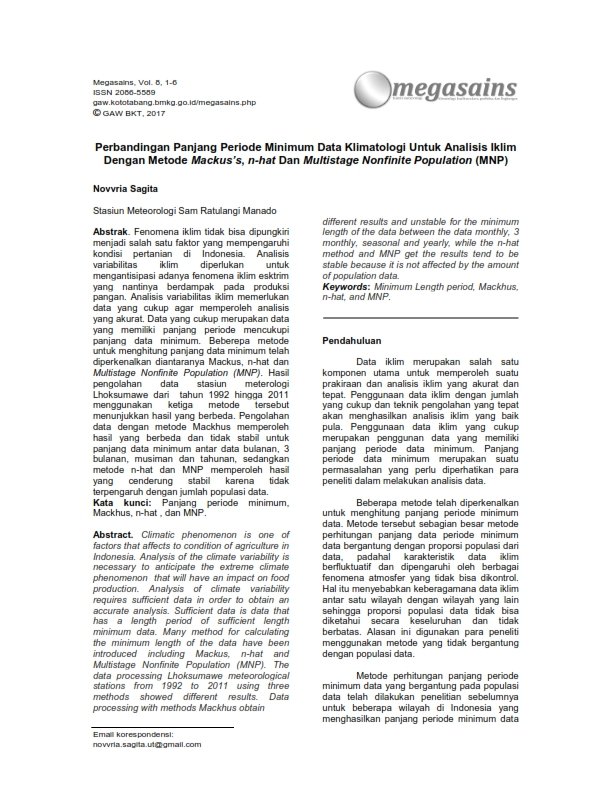Comparison of Minimum Period Length of Climatological Data for Climate Analysis Using Mackus's, n-hat and Multistage Nonfinite Population (MNP) Methods
Main Article Content
Abstract
Abstract. Climatic phenomenon is one of factors that affects to condition of agriculture in Indonesia. Analysis of the climate variability is necessary to anticipate the extreme climate phenomenon that will have an impact on food production. Analysis of climate variability requires sufficient data in order to obtain an accurate analysis. Sufficient data is data that has a length period of sufficient length minimum data. Many method for calculating the minimum length of the data have been introduced including Mackus, n-hat and Multistage Nonfinite Population (MNP). The data processing Lhoksumawe meteorological stations from 1992 to 2011 using three methods showed different results. Data processing with methods Mackhus obtain different results and unstable for the minimum length of the data between the data monthly, 3 monthly, seasonal and yearly, while the n-hat method and MNP get the results tend to be stable because it is not affected by the amount of population data.
Article Details

This work is licensed under a Creative Commons Attribution-NonCommercial 4.0 International License.
The author is willing to retain the copyright and grant journal rights to the first publication with works that are simultaneously under license the Creative Commons Attribution-NonCommercial-NoDerivatives 4.0 International. It allowing the others to share the work with recognition of the author's work and the initial publication in this journal.
Authors can enter into separate additional contractual arrangements for the non-exclusive distribution of published versions of journal works (for example, posting them to institutional repositories or publishing them in a book), with recognition of the initial publications in this journal.
Authors are permitted and encouraged to send their work online (for example, in their institutional repositories or websites) before and during the submission process because it can lead to productive exchanges, as well as previous and larger citations of published works.

